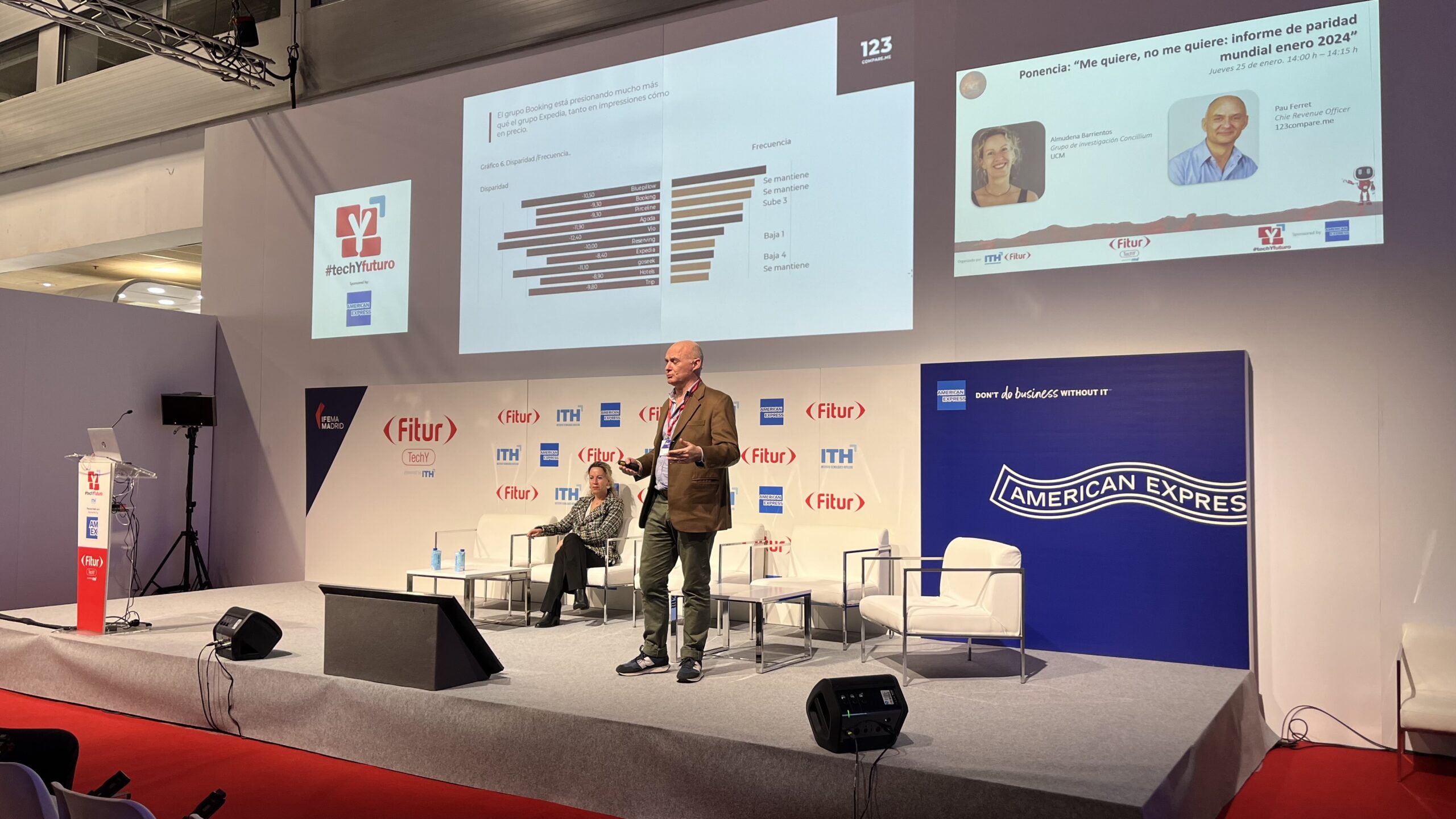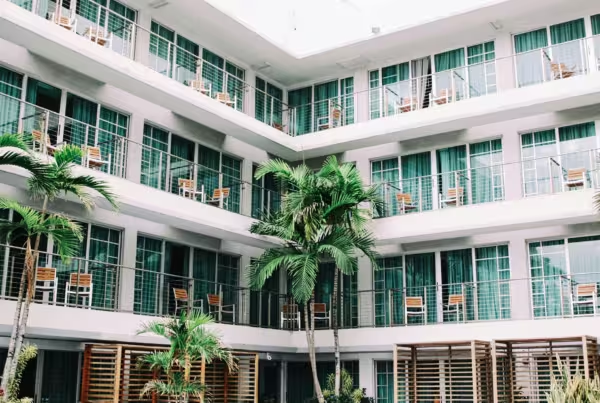123compareme unveiled its second Global Price Parity report during the 44th edition of FITUR. This periodic report once again highlighted the aggressive pricing strategy employed by online booking platforms, noting that OTAs offer a lower price than that published on the hotel’s website in three out of four cases.
On November 14th, following the launch of the “World Parity Monitor,” a leading observatory for parity analysis in the global Hospitality sector, 123compareme presented the first World Price Parity report for the hotel sector (WPR) in Barcelona.
After the presentation on January 14th, the company released the January 2024 report during the 44th edition of FITUR at the techYnegocio space of the Hotel Technology Institute on January 25th. This report was valued in comparison to the October report, establishing a comparison between the two.
The presentation, conducted by Dr. Almudena Barrientos, director of the Concillium research group at the Complutense University of Madrid, specializing in Neurocommunication, and Pau Ferret, Chief Revenue Manager of 123compareme, also served as the perfect opportunity to announce the collaboration between both organizations for the analysis and dissemination of the WPR results.
Furthermore, the findings have led to the following conclusions:
1 – Overall Results
Three out of four times, some OTAs offered a lower price that the price available on the hotel’s website; in more than half of the instances (56%), the online distribution platforms belong to either the Booking Group or Expedia.
Additionally, comparing the results from January 2024 with those from October 2023 reveals a slight decrease in price disparity in January compared to October: if in Octuber it was established that in 79% of the cases online booking platforms showed a price disparity, in January the percentage is at 75.31%.
2 – Regarding booking anticipation, length of stay, type of travelers, and category of the establishment, it can generally be said that OTAs are more aggressive in pricing during higher demand periods: “where there’s more to gain.”
More specifically, when referring to booking anticipation, it significantly influences price parity, with the disparity being more pronounced for same-day bookings. Comparing the results from October to January shows a 4 percentage point decrease, from an 85% “loss” in October for same-day bookings to 81% in January. However, this data should be cautiously analyzed to determine a generalized downward trend for this year.
Price disparity is also closely related to the length of stay: shorter stays, especially one-night bookings, tend to show a significantly greater price disparity than longer stays. This pattern repeats across both analyzed periods, attributed to the high volume of searches on Metasearchs for stays of 1 to 2 nights, which represent the highest demand peaks.
The type of traveler also affects the pricing strategy deployed by OTAs, being more aggressive for couples and “only travelers” than for families. This is mainly because hotels often design specific offers and promotions for families, which are in most cases much more aggressive than those for other segments identified in the study.
Lastly, regarding the category of establishments, the percentages obtained in both reports show that OTAs are more aggressive in pricing for higher category hotels: 4 and 5 stars, with percentage variations ranging between 6% and 10% compared to 3-star hotels.
3 – Results according to the device used for booking show significant differences.
The studies conducted using the parity monitor reveal significant differences based on the device used to make bookings, with Booking.com often being much more aggressive in pricing for reservations made on mobile devices. The fact that OTA has registered more than 20 million app downloads in the last three years, with bookings through the app accounting for more than 40% of the total, combined with the challenge for independent hotels and small groups to position and attract users to their apps, explains the application of discounted rates on Booking.com’s mobile platform.
4 – Results by destination
The aggressiveness of OTAs’ pricing strategy based on location shows differences ranging between 60% and 92% depending on the destination, being much more pronounced in specific local markets and on those platforms that are part of larger groups and classified as “secondary brands,” such as Agoda, which belongs to the Booking.com group.
In any case, what is observed are significant variations between specific destinations. For example, Mallorca faces a much more aggressive strategy in January 2024 compared to November 2023, while Paris experiences a more “gentle” scenario.
The focus is again on demand and booking anticipation. Mallorca experiences its lowest demand peak from November to January, which, according to the OTAs’ pricing strategy, would explain why the price disparity starts from this date and decreases with the end of the season and the beginning of winter.






